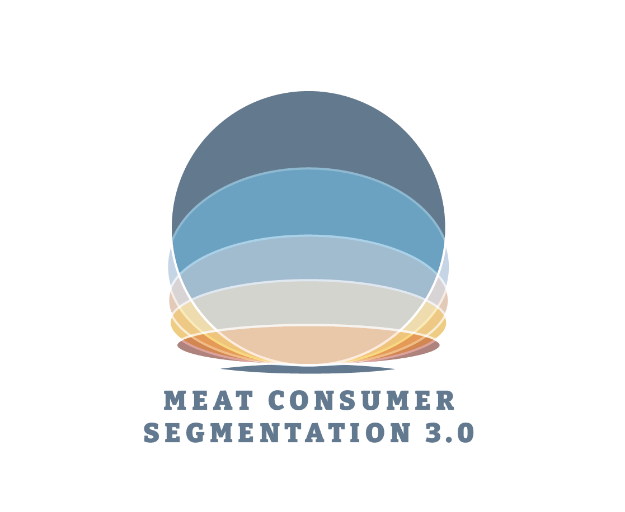In March 2021, Midan surveyed 1,000 meat and chicken consumers to understand how meat e-commerce was faring a year after the coronavirus turned the world upside down. While COVID-19 amplified online meat shopping in the early days of the pandemic, e-commerce platforms have continued to thrive even as quarantine restrictions lifted and vaccines rolled out this spring.
We learned that online meat shopping continues to gain momentum: 33% of meat consumers have purchased meat or chicken online for the first time since the pandemic began; this number has continued to rise from its April 2020 figure of 21%.
Grocery pickup and delivery is driving online meat purchasing.
Click and collect services have grown 10 percentage points since the beginning of the year. In March, 46% of meat consumers used a local grocer’s website/app for pickup, compared to 36% in January.
In March, 57% of consumers purchased meat or chicken online in the past month. Most (91%) of these consumers purchased their protein from a local retailer’s website/app for pickup or delivery.
By comparison, of those shoppers who purchased meat or chicken online, 32% used general delivery services (e.g., Instacart, Amazon Grocery) and 15% used meat-specific delivery services (e.g., ButcherBox, Crowd Cow). 20% used a meal kit delivery service (e.g., HelloFresh, Blue Apron).
These stats indicate that retailers hold the key to robust omnichannel shopping and those that “get it right” can foster even greater customer loyalty among these online shoppers to lock in their meat dollars.
Two-thirds of meat consumers are happy with their local retailer online services.
Anticipate that grocery e-commerce for meat will continue to thrive.
66% of meat consumers who use a retailer’s pickup or delivery services are very or extremely satisfied with their overall experience. Consumers cite convenience, time savings and safety as the top reasons for using a retailer’s website or app to order meat.
Since the pandemic began, grocery stores have worked out the kinks in their e-commerce platforms. To keep shoppers happy and off competitors’ websites, retailers will need to continually refine and upgrade their online ordering to ensure a seamless meat buying experience.
Meat-specific and general online delivery services are getting high marks from consumers.
Since January, Net Promoter Scores® (NPS), a gauge of consumer experience, for online meat/chicken ordering have jumped from 26 to 59* for meat-specific services (e.g., ButcherBox, Crowd Cow) and from 38 to 59* for general delivery services (e.g., Instacart, Amazon Grocery).
In addition, 2 in 3 consumers who use these services are considered “promoters” — those likely to recommend them to a family member or friend.
While the percentage of consumers ordering meat from non-grocery sites is relatively small, these companies offer quality meat products and have highly satisfied customers. To grow share in the online meat space, focus on expanded purchasing options, hassle-free ordering and reliable delivery.
*Based on global NPS standards, any score above 0 is considered “good,” a score of 50 and above is “excellent,” a score of 70 and above is “world class.”
Half of online meat consumers are purchasing all or most of their meat online.
Many consumers have appeared to push past reservations about others selecting their meat products. 53% of online meat consumers purchased a majority of their meat and chicken online (vs. in-store) during the previous month, which equates to 30% of all meat eaters.
Some of this online buying is being driven by COVID-19; once the pandemic is over, 41% of online meat consumers (23% of total meat eaters) say they will purchase most of their meat online.
To keep consumers buying the bulk of their meat online post-pandemic, create an uber-convenient purchase experience that delivers quality products – minus the trip to the store. (Some things don’t change: 18% of consumers said they don’t like going to the grocery store.)
Get to know who’s shopping online.
Demographics
Men, younger consumers, households with income above $50K, households with children, college graduates, consumers in urban areas, and Asian and Hispanic consumers are more likely to purchase meat/chicken online and they are generally using the various sources more often.
Segmentation
Nearly 9 in 10 consumers who are Protein Progressives have purchased meat/chicken online, while 58% of Convenience Chasers and 54% of Family-First Food Lovers have also purchased meat online.
- Protein Progressives: busy trend setters looking to experiment, eat all proteins, most likely to replace meat with plant-based proteins
- Convenience Chasers: price-conscious coupon and promotion seekers who put convenience first, less interested in claims
- Family-First Food Lovers: love to cook and explore in the kitchen, believe meal time equals togetherness, prefer meat/poultry with nothing added
More Reports
Millennial Profile Report
Millennial Profile Report See Why Millennials Are a Driving Force in the Meat Industry Millennial consumers are having an unmistakable impact on the meat industry. Born between 1981 and 1996, Millennials consume more protein than the general meat eater and claim meat...

Meat Consumer Segmentation 3.0
Meat Consumer Segmentation 3.0NEW for 2023! Updated Segmentation ResearchOur World Is Changing Rapidly — and Meat Customers Are Evolving Along With It Midan pioneered the first meat consumer segmentation study in 2016 and has continually explored and made regular...

Texas Beef Perceptions
Texas Beef Perceptions Fact SheetIt May Be Time to Rethink the Bias Against Texas Beef For many years, there has been a bias against Texas-raised beef cattle within the meat industry. New research from Texas A&M suggests that the quality of Texas beef today is...
Pork Attributes
Pork Attributes Research PackageHow Marketing Claims and Attributes Are Changing How Consumers Buy PorkConsumers are struggling to make sense of all the marketing attributes and claims they encounter on menus and at the meat case. In September 2022, Midan Marketing...
Gen Z Profile
Gen Z Profile ReportSee How the Rise of Gen Z Will Influence the Future of the Meat IndustryBeing future-focused is smart business: How will upcoming generations shape the world? One important cohort that the meat industry has its eye on is Generation Z. Out of...
Beef Attributes
Beef Attributes Research PackageExplore the Claims and Attributes That Matter to Today’s Meat ConsumersAs brands seek to differentiate and win sales, today’s meat cases and menus are filled with marketing attributes and label claims. But which have the most impact on...
Millennial Profile Report
Millennial Profile Report See Why Millennials Are a Driving Force in the Meat Industry Millennial consumers are having an unmistakable impact on the meat industry. Born between 1981 and 1996, Millennials consume more protein than the general meat eater and claim meat...

Meat Consumer Segmentation 3.0
Meat Consumer Segmentation 3.0NEW for 2023! Updated Segmentation ResearchOur World Is Changing Rapidly — and Meat Customers Are Evolving Along With It Midan pioneered the first meat consumer segmentation study in 2016 and has continually explored and made regular...

Texas Beef Perceptions
Texas Beef Perceptions Fact SheetIt May Be Time to Rethink the Bias Against Texas Beef For many years, there has been a bias against Texas-raised beef cattle within the meat industry. New research from Texas A&M suggests that the quality of Texas beef today is...